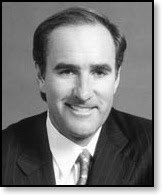
When a public company decides to sell the common stock of a part of one of its divisions or subsidiaries using an initial public offering (IPO), you have what is known as an equity carve-out. Each one of these “carved-out” subsidiaries has its own unique board, CEO, and financial statements. The corporate parent supplies strategic planning, direction, and central resources.
Examples of companies who have taken this direction for their corporate structure are The Limited, Genzyme, and Enron, with several notable others. How has this innovation worked for these companies?
Dennis Carey explains:
“We examined the performance of US equity carve-out subsidiaries from 1985 to 1995, in cases where 50 percent or more of each subsidiary's shares were retained by the parent. (We were interested only in those companies where the parent remained an operating center, not a loosely affiliated holding company.) Over a three-year period, the subsidiaries in this sample showed average compound annual returns of 20.3 percent 9.6 percent better than the Russell 2000 Index. Those companies that repeatedly sold stakes in subsidiaries fared even better. Three years after the carve-out, their subsidiaries showed annual returns of 36.8 percent. The parent companies themselves experienced average annual shareholder returns of 31.1 percent.”
Dennis Carey is able to conclude from this study that equity carve-outs are an excellent way to take advantage of growth opportunities while also improving shareholder value.
As one example, take Safeguard Scientifics: Between 1985 and 1996 this company gave birth to six new companies, with a resulting growth from $66 million in 1985 spiraling up to $1.9 billion in 1996.





